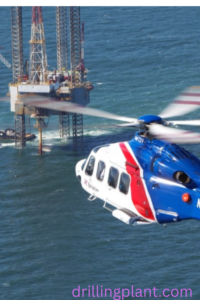Tips on traveling Offshore for Work via Helicopters
For many professionals, traveling to offshore locations is a regular part of the job, it can be for oil and gas operations, maritime industries, or remote research projects. Helicopter travel is often the preferred method due to its speed and direct access to the location. If you’re preparing for an offshore work trip via helicopter, here’s a comprehensive guide to ensure your journey is as smooth and efficient as possible.
Why Oil Companies use helicopters for Offshore Work travels
- Efficiency: Helicopters can quickly transport workers to offshore platforms avoiding lengthy boat rides.
- Access to Oil Platform Locations: Many offshore sites lack the infrastructure for traditional transport. Helicopters can land on specialized helipads or designated landing areas, making them essential for accessing these locations.
- Flexibility: Helicopters offer flexibility in scheduling and can often adjust to meet urgent or changing needs, providing an advantage in dynamic work environments.
Preparing for Your Helicopter Journey
1. Understand the Requirements: Different helicopter services and offshore sites have specific requirements. Ensure you are aware of any necessary documentation, such as work permits or safety certifications. Confirm baggage limits and any special instructions provided by your employer or helicopter service.
2. Dress Appropriately: Wear work-appropriate clothing that adheres to both safety and environmental conditions. Ensure your attire is suitable for both the helicopter flight and the offshore work environment, like a pair of jeans and sneakers.
3. Pack Efficiently: Space in helicopters is limited, so pack only essentials in a small, soft-sided bag. Include necessary work gear, personal items, and any required safety equipment. Check with your service provider about the maximum allowable weight and size for your baggage.
4. Arrive Early: Helicopters often have strict departure schedules. Arriving early allows you to complete check-ins, undergo a safety briefing, and address any last-minute details. Being punctual helps ensure a timely departure and a smooth start to your trip.
During the Flight
1. Follow Safety Procedures: Pay close attention to the safety briefing provided by the crew. This will cover emergency procedures, the use of safety equipment, and other important information. Adhering to these guidelines is crucial for your safety.
2. Ensure to fasten your seatbelt properly and secure all your personal items in other to reduce the risk of items becoming a hazard during the flight.
3. Maintain Comfort: Helicopter flights can be bumpy, particularly in adverse weather conditions. If you have any concerns about motion sickness, take preventive measures before your flight.
Upon Arrival
Follow Disembarking Instructions: Upon landing, follow the crew’s instructions for disembarking. They will guide you through the process to ensure a safe and orderly exit from the helicopter. You will be required to pick your luggage which will be removed from the storage for you upon landing.
Conclusion
Traveling to offshore work locations via helicopter combines efficiency, flexibility, and access to remote sites, making it an ideal choice for many professionals. By understanding the requirements, preparing appropriately, and following safety guidelines, you can ensure a smooth and effective journey.
 Safe travels and may your offshore work experience be productive and successful!
Safe travels and may your offshore work experience be productive and successful!
